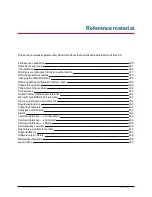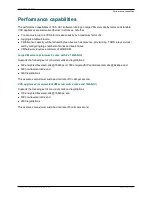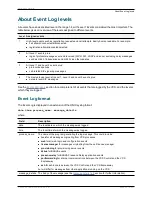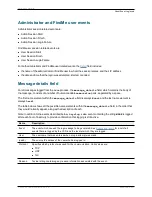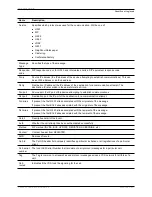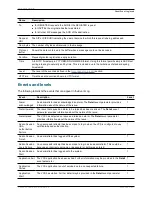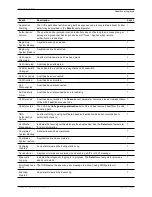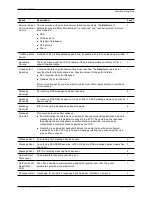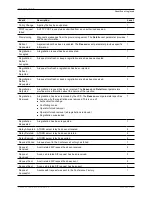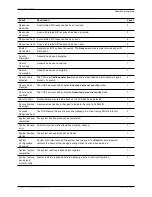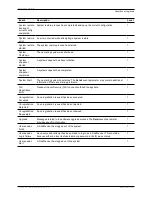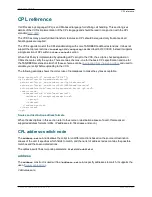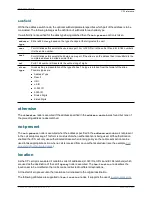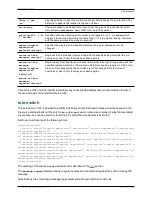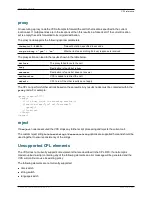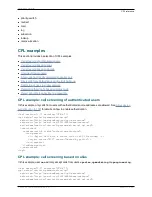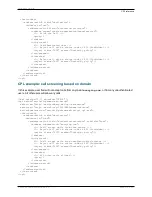
About Event Log levels
All events have an associated level in the range 1-4, with Level 1 Events considered the most important. The
table below gives an overview of the levels assigned to different events.
Level Assigned events
1
High-level events such as registration requests and call attempts. Easily human readable. For example:
n
call attempt/connected/disconnected
n
registration attempt/accepted/rejected
2
All Level 1 events, plus:
n
logs of protocol messages sent and received (SIP, H.323, LDAP and so on) excluding noisy messages
such as H.460.18 keepalives and H.245 video fast-updates
3
All Level 1 and Level 2 events, plus:
n
protocol keepalives
n
call-related SIP signaling messages
4
The most verbose level: all Level 1, Level 2 and Level 3 events, plus:
n
network level SIP messages
See the
Events and levels
section for a complete list of all events that are logged by the VCS, and the level at
which they are logged.
Event Log format
The Event Log is displayed in an extension of the UNIX syslog format:
date time process_name: message_details
where:
Field
Description
date
The local date on which the message was logged.
time
The local time at which the message was logged.
process_name
The name of the program generating the log message. This could include:
n
tvcs
for all messages originating from VCS processes
n
web
for all web login and configuration events
n
licensemanager
for messages originating from the call license manager
n
provisioning
for provisioning server events
n
b2bua
for B2BUA events
n
presencerelay
for B2BUA Presence Relay application events
n
portforwarding
for internal communications between the VCS Control and the VCS
Expressway
n
ssh
for ssh tunnels between the VCS Control and the VCS Expressway
but will differ for messages from other applications running on the VCS.
message_details The body of the message (see the
Message details field
section for further information).
Cisco VCS Administrator Guide (X8.1.1)
Page 357 of 507
Reference material
About Event Log levels













